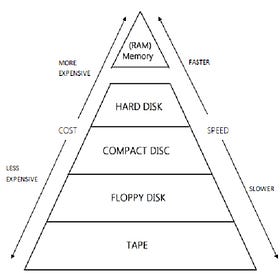Speed as Proof — How Tempo Signals True Technological Advantage
When people talk about technological advantage they point to math, patents, or market share.
That’s fine — but there’s a simpler, deeper test: speed that doesn’t burn itself out.
Across physics, engineering, warfare, or markets, the same rule holds: the ability to store energy, preserve it without loss, and release it at tempo — repeatedly and predictably — is the hallmark of superior technology.
When you can do that, you don’t just move faster; you author outcomes.
A cultural shortcut: Top Gun: Maverick. The film’s spectacle isn’t just popcorn — it’s a public demonstration of projection. When a nation frames the image of “mach speed” as the barometer of dominance it is signaling: we can reach speeds you cannot, and we will show it. That message landed: Top Gun: Maverick became one of the biggest box-office hits of recent years, signaling both cultural and commercial reach.
Speed is proof.
And when speed is lossless — when it moves without burning itself out — it’s more than proof.
It’s inevitability.
Physics:
The speed of light isn’t just a constant — it’s the barometer of possibility. Distances are measured in light-years because speed defines the frontier of the universe.
Superconductors prove advancement by transmitting energy with zero resistance. The marvel isn’t just efficiency; it’s lossless speed — current racing without decay, making the impossible possible.
Engineering:
Maglev trains don’t just move faster than rail — they float, eliminating friction. The breakthrough isn’t brute horsepower but the removal of loss, turning velocity into a new mode of transit.
The microprocessor race isn’t about the number of transistors; it’s about clock speed — how fast information cycles through without degradation.
Communication:
Morse code, binary, fiber optics — all hinge on faster transmission with less loss. The entire internet is a monument to speed-as-proof: packets racing at light, error-corrected to minimize entropy.
Memory Collapses History
Wall Street still talks about “reading the tape” (slow, archival, narrative).
Biology:
The human nervous system outpaces every organ not by strength, but by conduction speed. Synapses fire in milliseconds, collapsing delay. Consciousness itself is a function of lossless tempo.
And in Markets:
Most traders chase magnitude: volatility, range, percentage moves. But real advancement comes from authorship at speed.
Variance collapse is proof. A bar that resolves faster than models can predict forces recognition.
Echoes and recursions are proof. Memory imprints replay at tempo, showing that speed has bent the system into rhythm.
Lossless speed is the grail. Bursts that don’t degrade — that resolve without burning capital or leaving disorder — are the financial equivalent of superconductivity.
The Law of Speed as Proof
Every domain converges on the same law:
Scale looks powerful but burns energy.
Speed without loss is power that endures.
From photons to semiconductors, maglev to markets, speed has always been the undeniable metric of technological advancement.
And today, in the marketplace, that law plays out in real time.
Variance collapses not because of narrative or scale, but because speed authored at the right second becomes resolution.
Presence is the only interface where cognition can operate at that speed.
That’s why authorship isn’t just trading.
It’s the proof of a new technology — one that imprints memory, collapses variance, and runs the market on lossless tempo.
Scale burns out.
Speed without loss endures.
In physics, that’s superconductivity.
In markets, that’s authorship.





